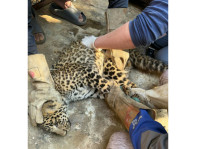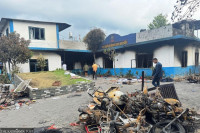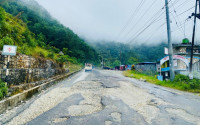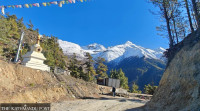Gandaki Province
Gupteshwar Cave at risk of landslides
Rising floodwaters from the Damdare stream heighten fears for the religious and tourist site.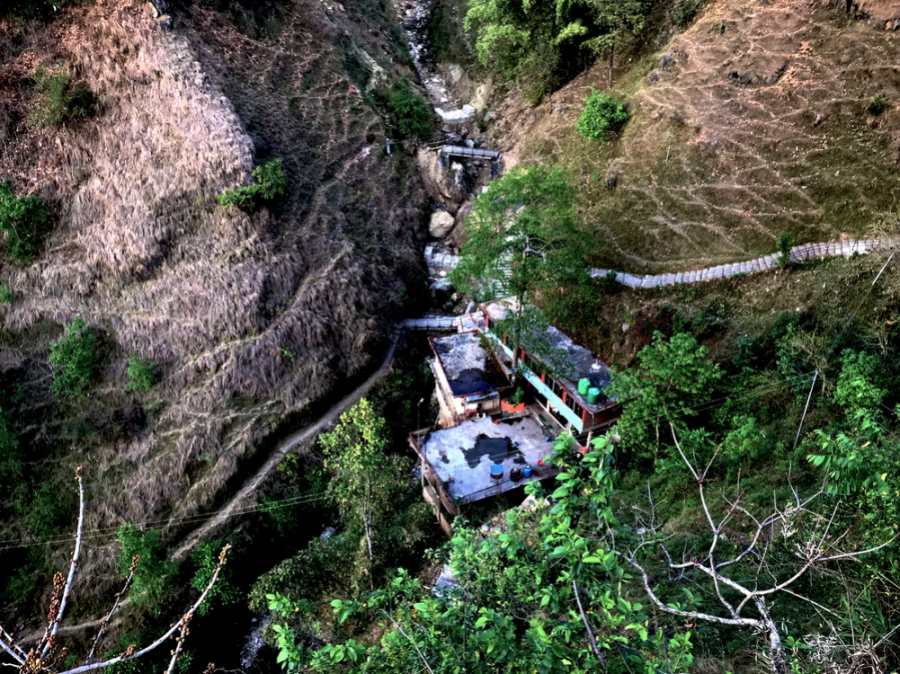
Suman Jung Thapa
The seven-storey Gupteshwar Cave in Kushma Municipality–4 is facing an increasing threat of landslides, with locals warning that existing government protection measures are inadequate.
Perched in a gorge between two small hills, the cave sits precariously close to the Damdare stream.
During the monsoon, the swollen stream not only erodes its banks but also poses a high risk of flooding, especially due to a large boulder lodged midstream.
A rock, carried down by a massive landslide in Durlung two decades ago, has narrowed the flow, increasing the danger of water being diverted towards the cave.
Shambhu Kumar Mishra, senior watershed management officer at the groundwater and watershed management office, cautioned that unless the boulder is removed, the risk remains severe.
“If floodwaters cannot follow their natural course, they will push through nearby corners, potentially flooding the cave,” he said. His office has been working on protective measures such as raising the height of a check dam and implementing bioengineering techniques, including planting bamboo, tiger grass locally known as amriso, napier grass, and other vegetation to stabilise the slopes.
The cave’s location also makes it vulnerable to smaller landslides from above. Last year, a landslide occurred near the Ram Temple within the cave complex, and another has recently fallen from the same spot.
Although damage has been minimal so far, Hari Narayan Upadhyay, chair of the Gupteshwar religious and tourism development institution, insists that flood risk from the Damdare stream remains the greatest concern. He argues that only a substantial state-led intervention, with a detailed project report and adequate budget, can ensure the cave’s long-term safety.
Local authorities, however, say funding is a major hurdle. Ward chair Dinesh Shrestha explained that the ward budget cannot cover landslide prevention, urging federal or provincial governments to invest significantly in the site’s protection.
Access to the cave has also faced challenges. A concrete bridge along the Damdare stream on the route via the Gayatri Temple was destroyed by a landslide, making travel hazardous. The management committee recently built an iron staircase to improve safety, especially during the holy month of Shrawan, when visitor numbers surge. On three Mondays alone this month, more than 5,000 devotees visited, contributing over Rs220,000 in offerings.
Located just 10 minutes from Kushma Bazaar, the district headquarters of Parbat, Gupteshwar Cave is celebrated for both its religious and tourist significance. Prithvi Narayan Sharma of the Gupteshwar Religious Tourism Promotion Institution claims it to be the world’s longest and the only seven-storey cave—something they say can be verified by measurement and exploration.
Local legend holds that Goddess Parvati once performed penance here to wed Lord Shiva, and that the divine couple spent time in seclusion inside, giving the site its name “Gupteshwar Mahadev Cave.”
Discovered around 90 years ago by local herder Ratna Bahadur Karki, the naturally formed cave now draws visitors from across Nepal and beyond. To boost its appeal, a 78-foot-tall statue of Shiva and Parvati, along with a glass palace and temple, is being built on 15 ropanis of land surrounding the site.
The cave’s spiritual heritage and tourism potential are undeniable but without swift and substantial action, locals fear that nature’s forces may one day erase this treasured landmark.




 5.83°C Kathmandu
5.83°C Kathmandu
